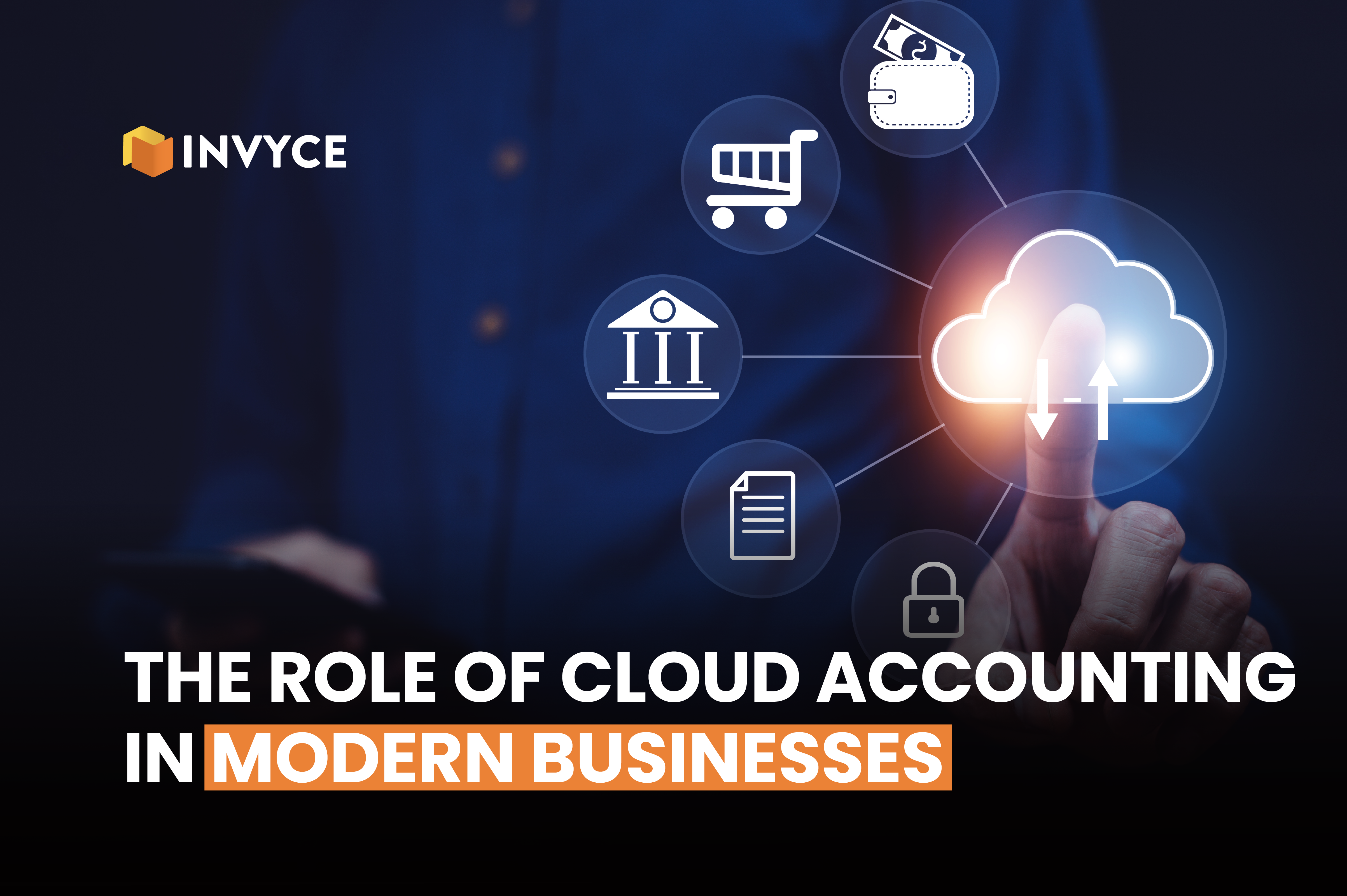21 Oct

Cloud accounting is a transformative application that redefines how businesses manage their finances. In the current business environment, its importance cannot be overstated cloud accounting not only streamlines financial operations but also supports strategic decision-making and growth. To fully use its potential, businesses must implement advanced strategies that maximize efficiency, improve collaboration, and provide real-time insights, ensuring they remain competitive and well-positioned for future success.
In this article, we will explore these strategies and how they can be applied to move your business forward.
1. How Cloud Accounting Can Transform Your Business
Cloud accounting is more than just a trend; it’s a powerful tool that can reshape how you manage your finances. To truly benefit, you need to understand how cloud accounting works for your unique business needs.
Start by taking a close look at your current accounting processes. Are outdated systems slowing down your financial reporting? Is collaboration across your team difficult? Identifying these pain points will help you see where cloud accounting can add the most value.
Next, explore the features of different cloud accounting platforms. Look for options that offer real-time data access, automated workflows, and strong integration with your existing tools. These features are key to streamlining operations and reducing manual errors. Automating tasks like invoicing and payroll can save time and allow you to focus on strategic financial planning. Plus, real-time data access means your team can make quick, informed decisions.
2. Improving Collaboration and Workflow Efficiency
One of the biggest advantages of cloud accounting is its ability to improve collaboration. With your financial data stored in the cloud, your team can access it from anywhere, anytime. This is especially valuable if you have remote employees or multiple locations.
To get the most out of this, make sure your team knows how to use the cloud accounting platform effectively. It’s not just about having access—it’s about using the software to its fullest potential. Invest in training that covers advanced features like multi-user access and real-time collaboration tools. This enables your team to work more efficiently and make quicker decisions.
You should also consider how to optimize your workflow within the cloud accounting system. For example, setting up automated approval processes for expenses and payments can reduce bottlenecks, speeding up operations while ensuring accuracy and accountability. The more you streamline your workflows, the more time and resources you can devote to growth.
3. Keeping Your Data Secure and Compliant
When you move your accounting to the cloud, securing your data is a top priority. Protecting sensitive financial information is important, especially with regulations like GDPR or HIPAA. So, how can you ensure your data is secure and compliant?
Start by choosing a cloud accounting provider that offers powerful security features, such as end-to-end encryption, multi-factor authentication, and regular security audits. These measures help protect your data both at rest and in transit. But don’t stop there—implement internal policies that control who can access what data. Use role-based access controls to limit sensitive information to those who need it.
Additionally, keep up with your provider’s compliance certifications. It’s not just about meeting standards—it’s about understanding the risks and making sure your cloud solution supports your regulatory needs. Regularly review compliance status and conduct internal audits to ensure your practices align with industry standards. This proactive approach reduces the risk of breaches and keeps your business on the right side of the law.
4. Making Smarter Decisions with Real-Time Data
One of the most powerful features of cloud accounting is real-time data access. This can significantly improve your decision-making, but only if you know how to use it effectively.
Ensure your cloud accounting system is fully integrated with your other business tools, like your CRM and inventory management systems. This integration allows seamless data flow, giving you a complete view of your financial health at any moment. With real-time data, you can monitor key metrics like cash flow, expenses, and revenue, helping you make informed decisions on the fly.
However, having access to real-time data is only valuable if you can interpret it. Invest in developing your team’s data literacy skills. Teach them how to read financial dashboards, spot trends, and use that information to drive strategic decisions. Whether you’re adjusting your budget, reallocating resources, or planning for future growth, real-time data provides the insights you need to act quickly and confidently.
5. Getting the Most Value for Your Investment
While cloud accounting offers many benefits, it also requires an investment. To ensure you’re getting the best return, focus on cost efficiency.
Start by understanding the pricing structure of your cloud accounting platform. Many providers offer tiered pricing based on users or functionality. Choose a plan that fits your current needs but allows for growth. Avoid paying for features you don’t need by customizing your plan to suit your specific requirements.
Regularly review your usage and identify areas where you can cut costs. If you’re not using certain features, consider downgrading your plan or exploring other providers. Take advantage of any discounts or promotions, such as annual billing discounts or multi-year contracts.
Think about the long-term cost benefits, too. While there may be an upfront investment, the savings from reduced manual labor, improved accuracy, and streamlined processes often outweigh the costs. By focusing on cost efficiency, you can ensure your cloud accounting solution delivers maximum value to your business.
6. Scaling Your Business with Cloud Accounting
As your business grows, your accounting needs will change. Cloud accounting provides the scalability needed to support this growth, but you need to plan strategically.
Start by assessing your growth plans and how they align with your current cloud accounting solution. Will your platform handle increased transaction volumes, more complex financial reporting, or expanded operations? If not, consider upgrading to a more robust solution or integrating additional tools that support your growth.
Scalability also means ensuring your cloud solution can adapt to changes in your business environment. For example, if you’re expanding internationally, your cloud accounting system should handle multiple currencies and comply with various tax regulations. This adaptability is crucial for maintaining financial control as your business expands.
Finally, use cloud accounting as a tool for strategic growth. By automating routine tasks and providing real-time insights, cloud accounting frees up your time to focus on bigger strategies. Whether it’s exploring new markets, launching products, or optimizing operations, cloud accounting provides the foundation for confident growth.
7. Integrating AI and Machine Learning
The future of cloud accounting lies in integrating AI and machine learning. These technologies can greatly enhance your financial management, but only if implemented effectively.
Start by identifying where AI and machine learning can add value to your accounting processes. For example, use AI to automate routine tasks like data entry or expense categorization, reducing human error and saving time. Machine learning algorithms can also analyze historical data and predict future trends, giving you actionable insights.
However, successfully implementing AI and machine learning requires more than just the right technology. You need a skilled team that understands how to interpret results and use them to drive strategic decisions. Invest in training your team on AI tools, and consider partnering with experts to get the most out of these technologies.
By integrating AI and machine learning into your cloud accounting, you can take your financial management to the next level, staying ahead of the competition and driving sustainable growth.
8. Ensuring a Smooth Transition
Moving to cloud accounting is a big change, but with the right approach, you can ensure it goes smoothly and delivers the results you need.
Start by developing a detailed migration plan with clear steps, timelines, and responsibilities. A phased approach works well, allowing you to test the new system with a small data subset before fully transitioning. This minimizes disruptions and ensures any issues are addressed early.
Communication is key to a successful transition. Keep your team informed throughout the process, and provide training on the new system so everyone is comfortable with the changes. This helps reduce resistance and ensures smoother adoption.
Finally, conduct thorough testing before going live. Run pilot projects, simulate real scenarios, and gather feedback to identify potential issues. By taking a proactive approach to testing and training, you can ensure a smooth and successful transition to cloud accounting.
Conclusion
Cloud accounting is more than just a tool. it’s a strategic asset that can move your business forward. By understanding how to utilize its capabilities, improve collaboration, ensure data security, and drive growth, you can make the most of your cloud accounting solution. As you implement these strategies, you’ll find that cloud accounting not only meets your current needs but also supports your long-term success, keeping you competitive in a rapidly changing business landscape.
Marjina Muskaan has over 5+ years of experience writing about finance, accounting, and enterprise topics. She was previously a senior writer at Invyce.com, where she created engaging and informative content that made complex financial concepts easy to understand.
Related Post
Copyright © 2024 – Powered by uConnect



Marjina Muskaan